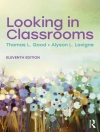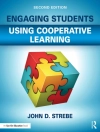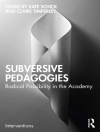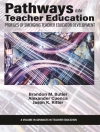Crime Analysis With Crime Mapping, Fifth Edition provides students and practitioners with a solid introduction to the conceptual nature and practice of crime analysis and how it assists police in crime reduction. Author Rachel Boba Santos delves into this emerging field, providing guidelines and techniques for conducting crime analysis supported by evidence-based research, real world application, and recent innovations in the field. As the only introductory core text for crime analysis, this must-have resource presents readers with opportunities to apply theory, research methods, and statistics to careers that support and enhance the effectiveness of modern policing.
Jadual kandungan
PART I: Foundations of Crime Analysis
Chapter 1: Crime Analysis and the Profession
Chapter 2: Theoretical Foundations of Crime Analysis
Chapter 3: Evidence-Based Policing and Problem Solving
PART II: Crime Analysis Process, Data, and Products
Chapter 4: Crime Analysis Process and Types
Chapter 5: Crime Analysis Data and Technology
Chapter 6: Geographic Data and Crime Mapping
Chapter 7: Crime Analysis Products and Communication
PART III: Tactical Crime Analysis
Chapter 8: Calls for Service Data and Repeat Incident Analysis
Chapter 9: Crime Data and Pattern Identification
Chapter 10: Persons and Property Crime Patterns
Chapter 11: Crime Pattern Bulletins, Response, and Evaluation
PART IV: Strategic Crime Analysis
Chapter 12: Statistics and Trends
Chapter 13: Long-Term Problem Analysis, Part I
Chapter 14: Long-Term Problem Analysis, Part II
Chapter 15: Evaluation of Response and Crime Reduction Goals
Mengenai Pengarang
Rachel Boba Santos is a professor at Radford University in the Department of Criminal Justice. She works with police departments and crime analysts. She conducts experimental and applied research on place-based and offender-based police crime reduction strategies, stratified policing, crime analysis, community engagement, and police use of force.Dr. Santos′ interests include conducting practice-based research which is implementing and evaluating evidence-based practices in the “real world” of criminal justice. In particular, she seeks to improve crime prevention and crime reduction efforts by police in areas such as crime analysis, problem solving, accountability, as well as leadership and organizational change. She and Dr. Roberto Santos co-created Stratified Policing which is an organizational model for systemizing proactive crime reduction strategies in police departments. Other areas of research include police/researcher partnerships, police/community collaboration, hot spot and problem-oriented policing, predictive policing, environmental criminology, crime and place, police/crime data and technology, experimental research methodology, and program evaluation.












